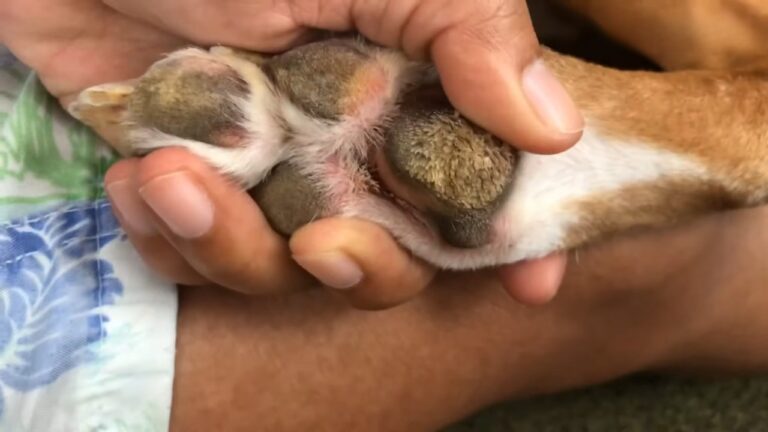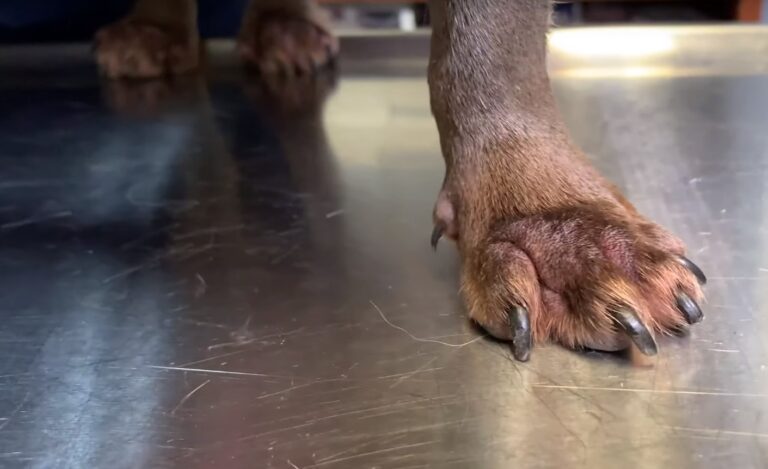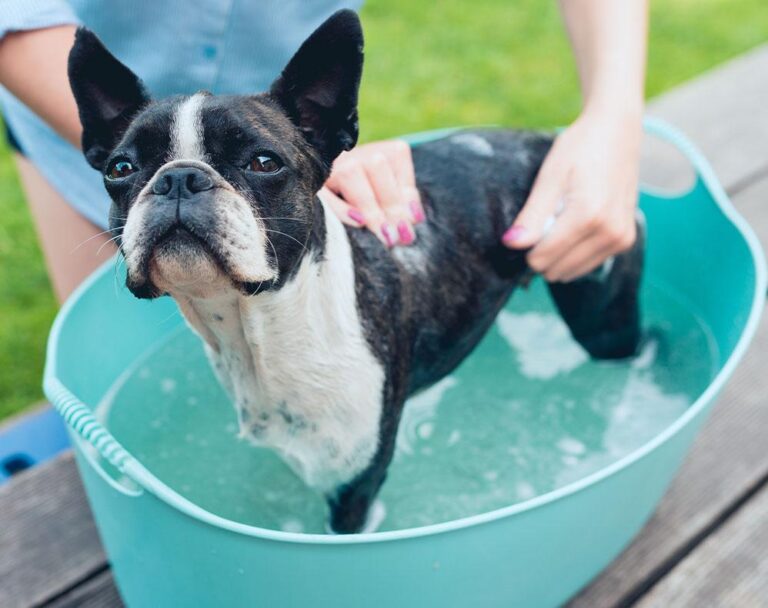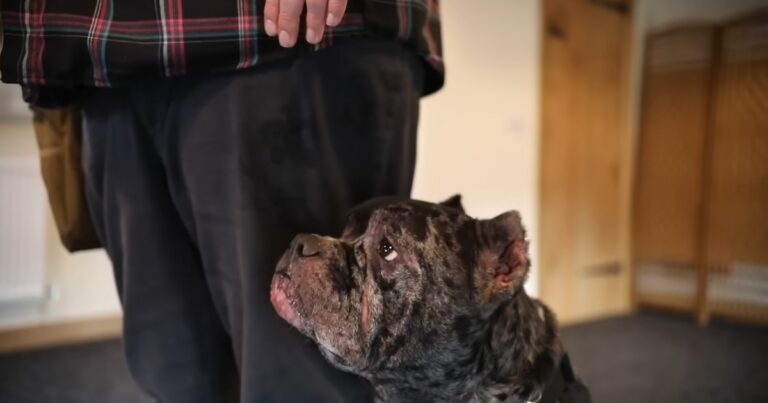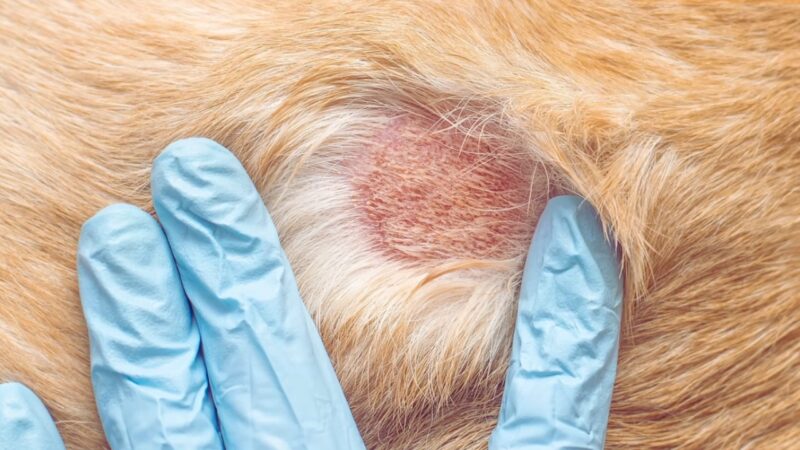Scabs caused by skin infections, allergies, or irritation can be unpleasant for our canine companions and potentially lead to further issues if left unaddressed. Understanding the underlying cause is key to effective treatment.
In this overview, we’ll look at proven methods vet professionals recommend for clearing up crusty sores and promoting proper healing.
Identify the Cause of Scabs
It’s important for vets to properly identify the cause of a dog’s scabs so they can recommend the right treatment. There are various potential underlying issues, from parasites and fungal infections to allergies or immune problems.
For example, mange mites often lead to severe itching and scratched-up skin. Allergies to food or environmental factors like pollen can also result in skin irritation and scabbing as the dog scratches. Bacterial infections might develop if a dog keeps scratching broken skin.
The specific cause makes a big difference in deciding the treatment plan. If the vet doesn’t accurately diagnose the issue, any prescribed solutions may not work, prolonging the dog’s discomfort. However, identifying the root trigger helps target effective interventions like medications or diet/lifestyle adjustments.
Soften Scabs Gently
Peeling scabs powerfully poses problems – punctures or pigmentation problems could pop up, plus infection introduction is more probable. Instead, oils or warm washcloths work wonders gently.
Natural lotions like coconut or compresses soothed softly separate scabby sections gradually over days. Such subtlety spares suffering while stripping scaly skin. Rigorous rubbing risks distress but delicate dabbing detaches damage delicately.
Once loosening is accomplished, simply shampoo scrubbing or regular grooming grooms them naturally. That preparation puts problem patches in a prime position to accept vet-advised salves smoothly and speed scarring solutions too! Peaceful patience post-patches pays off promoting proper healing happily.
So apply authorized aids mildly – your dear dog dishes decreased discomfort that way.
Choose the Right Shampoo
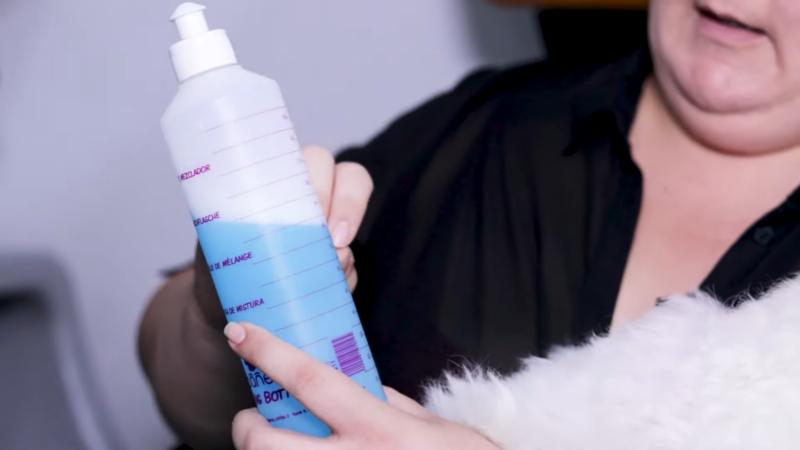
When bathing a dog with irritating scabs, choosing the correct shampoo is important. Medicated formulas can treat many skin conditions that cause scratching and scabbing, such as bacterial or fungal infections from mites/parasites.
For example, shampoos with ingredients like chlorhexidine are effective against skin bacteria/fungus. Those containing anti-parasitic medicines can help with issues like mange. Owners should follow the vet’s specific product recommendation.
Apply the shampoo as instructed by the vet, usually multiple times over several weeks. Using it correctly helps relieve symptoms, stop the spread of infection, and aid healing. Regular bathing and cleaning the skin with vet-approved shampoo can also soothe irritation, remove debris and allergens, and maintain hygiene to discourage future flare-ups.
Apply Prescribed Medications
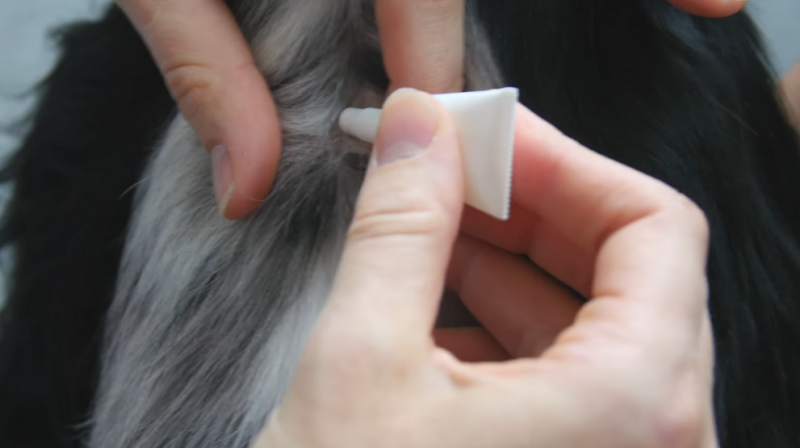
After diagnosis, doctors may decree dermal or dental doses to directly treat damages.
Topicals can tantalize targeted territories – anti-irritants, anti-bug butters or calming creams cure lacerations locally. Yet when difficulties dwell deeper, dental disinfectants deliver, like antibiotics against bacteria or antihistamines for hypersensitivities.
For instance, when addressing a dog’s dry skin, using Aquaphor sparingly and under veterinary guidance can be a safe and effective approach.
Obeying each piece of advice accurately actuates aid artfully. Completing care as certified ceaselessly confirms cure continuation too, precluding potential reprise.
Use Supplements for Skin Health
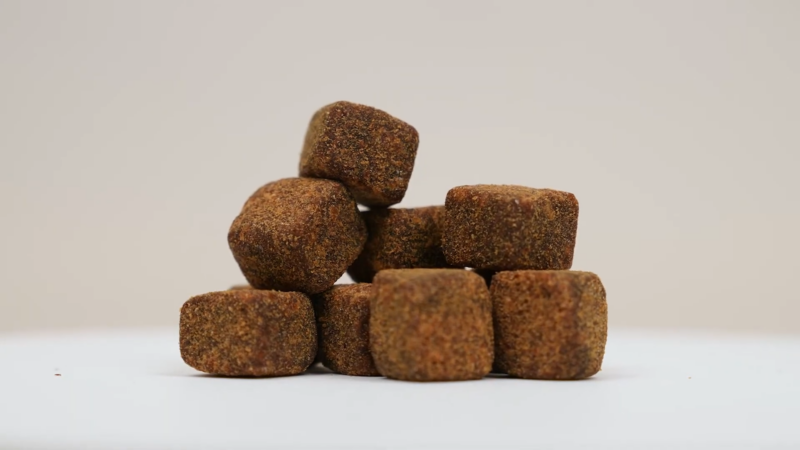
Fatty acids like omega crucial compounds, containing health advancements hounds can harness keenly.
Fish-derived supplements flaunt such nutrients, notorious for anti-agony abilities. They establish epidermis barriers beautifully while upgrading the entirety of the exterior. Equally essential, Vitamin E boosts healing hides hurt, and wellness too.
However, before including any extras, experts must evaluate canine conditions comprehensively. Licensed doctors will consider cases, current dietary details, and specific scab status seriously to suggest the right supplement structure and sums sagaciously.
The Bottom Line
The most important things to take away are:
- Seeking an accurate diagnosis from your vet is critical. Understanding the root cause enables the proper treatment plan.
- Gentle, veterinary-approved care of the affected areas is best for healing and your dog’s comfort. This prevents further damage or infection.
- Completing any prescribed medication courses as directed is key, even after signs improve, to ensure long-lasting remission.
- Regular check-ins with the vet allow close monitoring of your dog’s recovery progress and adjust the care approach as needed.

